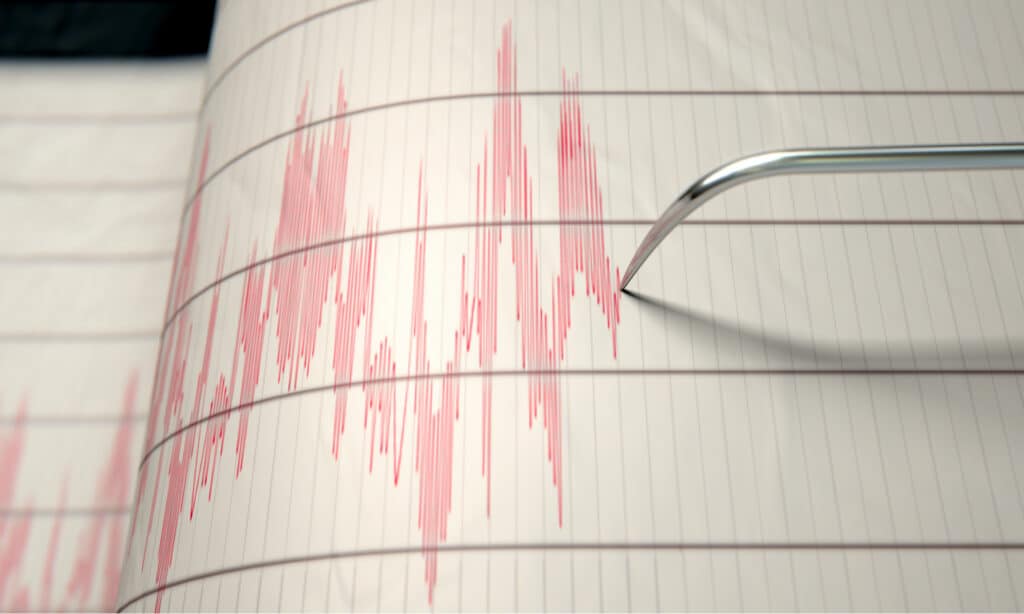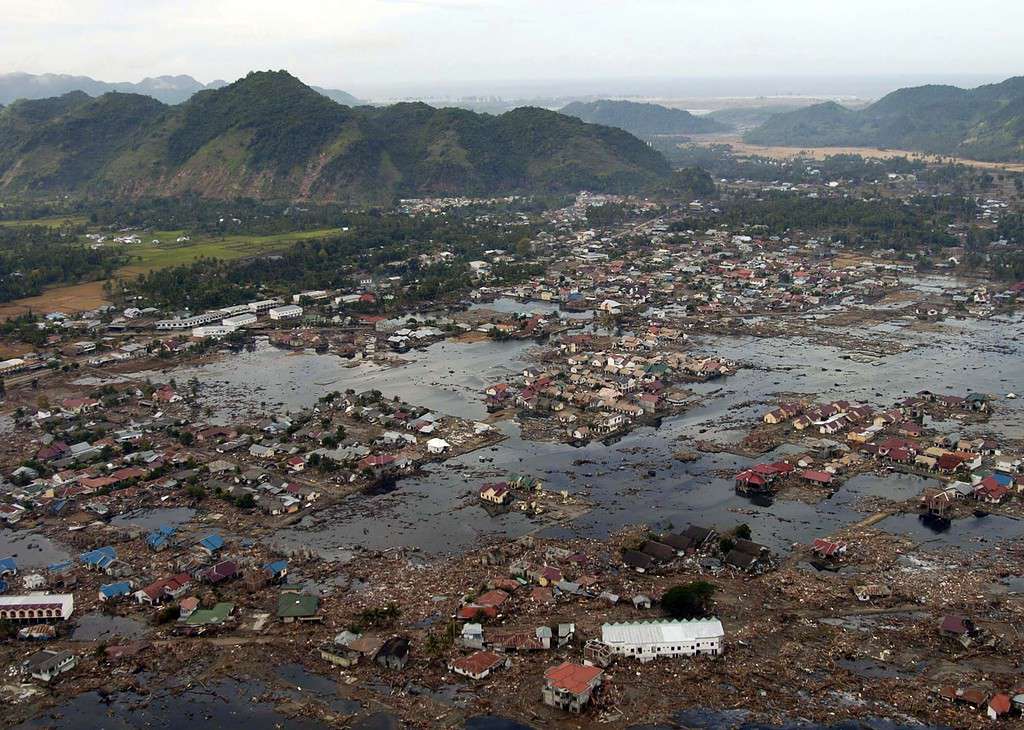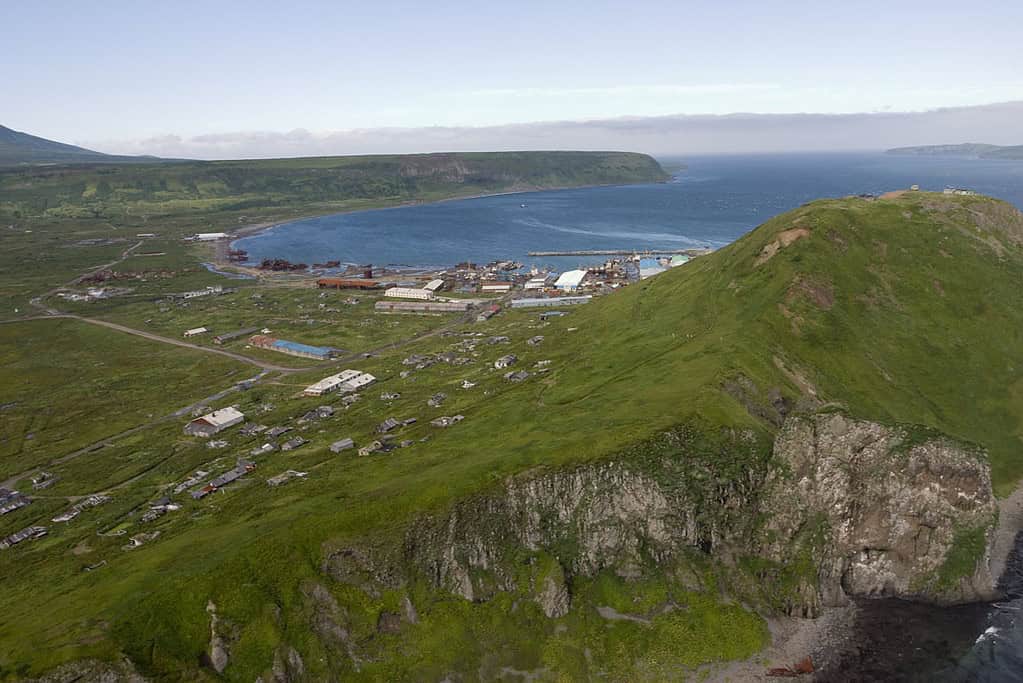While most people cite earthquakes as a reason to avoid moving to California, none of the 20 largest earthquakes on earth have even occurred in the continental United States. Curious about the world’s most extreme earthquakes? Keep reading.
What Is Earthquake Magnitude?
The earthquake moment magnitude scale measures the strength of an earthquake based on the energy of the quake. It is similar to the Richter scale in that it uses logarithmic math to calculate the severity. However, the Richter scale was replaced by the moment magnitude scale in the 1970s because the Richter scale tends to underestimate the severity of larger earthquakes. Less severe earthquakes tend to have similar numbers on both scales, but as they become more severe, the numbers diverge. However, some people use the term “Richter scale” to refer to any earthquake measurement scale.
The moment magnitude scale starts at 2.0 and goes up to 10.6. It ends there because, based on the logarithms of the scale, experts believe the earth’s very crust would tear apart during an earthquake larger than that! For reference, the amount of energy released in an earthquake with a rating of 6 on the moment magnitude scale is equal to 1.2 Hiroshima atomic bombs. A 9 on the scale is equivalent to 38,000 atomic bombs, and a 10 is equivalent to 1,200,000 atomic bombs.

Scientists measure earthquake magnitude with seismographs.
©Inked Pixels/Shutterstock.com
The Biggest Ever Earthquake Recorded
The largest earthquake recorded happened in Bio-Bio, Chile on May 22, 1960. Around 3:11 pm, the ground shook for around 10 minutes. The earthquake is estimated to have been between magnitude 9.4 and 9.6, making it the highest magnitude earthquake ever recorded. It is estimated that anywhere from 1,000 to 6,000 people died from the earthquake itself and other resulting natural disasters. The damage cost between $400 million and $800 million, or $3.66 billion to $7.66 billion in today’s dollars.
The epicenter of the earthquake was near Lumaco, a small town of just over 10,000 people. However, the quake greatly affected the larger nearby city of Valdivia. In fact, it is often called the Valdivia Earthquake.
The powerful earthquake caused devastating tsunamis that hit Chile, Hawaii, Japan, China, and The Philippines. The resulting waves were at least 25 feet high and moved across the ocean at a few hundred kilometers per hour. In Hawaii, 61 people died, alongside damaged ports, boats, and flooding. Seiches, which are similar to tsunamis but occur in bounded bodies of water like lakes, also occurred, likely as a result of the earthquake. These killed two people at a lake in Argentina.
The earthquake also caused serious landslides in the Andes Mountains. To this day, some of the areas’ vegetation has not grown back. The landslides also caused a lake to overflow. Luckily, the military secured the area to avoid flooding the city of Valdivia. This earthquake also led to a long-term volcanic eruption. However, an evacuation plan prevented deaths.
Other Large Earthquakes
While there might have been more powerful earthquakes before humans knew how to study them, these are the largest earthquakes throughout recorded history.
2. 1964 Alaska Earthquake

©U.S. Department of Defense / Public Domain – Original / License
This quake is also called the Good Friday Earthquake because it happened on Good Friday. Another name for it is The Great Alaskan Earthquake. It has a magnitude of 9.2 and lasted for over 4.5 minutes. This is the second most powerful earthquake ever recorded on Earth and the most powerful one ever recorded in North America. Experts believe that this major quake released up to 500 years of pent-up stress. Over 600 miles of the fault line the Pacific and North American tectonic plates ruptured, moving up to 60 feet in some areas.
This was another devastating earthquake. Only nine people died from the quake itself, but over 100 more died in the resulting tsunamis all around the world including five in Oregon and 12 in California. Tsunami waves from this earthquake reached as far as Antarctica and were also observed in Peru, Mexico, Japan, and New Zealand, as well as other coastal regions. The largest tsunami wave was a whopping 220 feet tall and hit Shoup Bay in Alaska. Tsunamis caused about $10 million of damage in Canada as well. As a result of this earthquake, seiches in wells were reported as far away as the UK and Namibia!
The city of Anchorage, Alaska was most heavily affected mainly by the earthquake as well as landslides that followed. However, other coastal towns and cities were affected greatly by the tsunamis and resulting floods. In fact, the city of Valdez was so destroyed by the tsunamis that they decided to rebuild the city four miles away on higher ground.
3. 2004 Sumatra Earthquake and Tsunami

050102-N-9593M-040 Indian Ocean (Jan. 2, 2005) Ð A village near the coast of Sumatra lays in ruin after the Tsunami that struck South East Asia. Helicopters assigned to Carrier Air Wing Two (CVW-2) and Sailors from USS Abraham Lincoln (CVN 72) are conducting humanitarian operations in the wake of the Tsunami that struck South East Asia. The Abraham Lincoln Carrier Strike Group is currently operating in the Indian Ocean off the waters of Indonesia and Thailand. U.S. Navy photo by Photographer’s Mate 2nd Class Philip A. McDaniel (RELEASED)
©U.S. Navy photo by Photographer’s Mate 2nd Class Philip A. McDaniel / Public Domain – Original / License
The 2004 tsunami following an earthquake in Sumatra was one of the most devastating natural disasters of our era. The massive quake, which happened on December 26, 2004, was magnitude 9.1, the 3rd largest ever recorded. It started at around 7:58 am and lasted between eight and 10 minutes. The epicenter was underwater, close to the coast of Sumatra, but the tsunami heavily affected nearby countries like Thailand, Sri Lanka, Indonesia, and India. However, large waves killed people as far away as South Africa, which is over 5,000 miles away. Over 225,000 people died from the tsunami, including likely over 150,000 people in Thailand alone. Over 9,000 people who died or were missing were tourists from other countries. The numbers from some countries are estimates due to the high number of people reported missing and never found.
Some experts believe the death toll was so high because the Indian Ocean does not have a tsunami warning system, and tsunamis are not extremely common in the area as they are around the Pacific “Ring of Fire,” so many people were taken by surprise. Only in isolated incidents where people recognized the signs of a tsunami did beaches get evacuated. Additionally, isolated indigenous tribes, like the Onge people, survived the tsunami due to folklore and previous knowledge of earthquakes and tsunamis.
The worst damage occurred in Indonesia where waves over 100 feet tall were reported. The flooding went as far as three miles inland in some areas. Other names for this quake include the Boxing Day Earthquake and the Sumatra-Andaman Earthquake.
4. The 2011 Tohoku Earthquake

The 2011 earthquake in Japan was one of the first huge quakes that led to videos and photos shared widely on social media. This earthquake, which happened on March 11th around 2:46 pm, was also a 9.1 and caused a devastating tsunami. This disaster is also referred to simply as 3.11, due to the date when it took place. The epicenter of the earthquake was about 50 miles off the coast of Japan, near the Tohoku region.
Similar to the 2004 quake, the waves of the resulting tsunamis reached over 100 feet in some places. They were estimated to travel at over 400 miles per hour and went as far as six miles inland. In some of the most affected areas, people had just eight to 10 minutes of warning. Additionally, some of the evacuation centers were not far enough inland to avoid the far reach of the wave. Over 100 of them were inundated with flood waters.
Over 19,000 people died and over 2,000 people were reported missing after the tsunami. Even years later over 200,000 people were still displaced by the earthquake. Many of these displaced people were from the Fukushima area. Due to the tsunami, a nuclear power plant had a meltdown and an explosion that caused nuclear material to go out into the surrounding area. Some of the area has been decontaminated and many have returned home. Just about 3% of the original evacuated area is still an “exclusion zone” or “difficult-to-return zone” where almost no one is allowed due to high levels of radiation.

The 2011 earthquake in Japan generated tsunami waves as high as 100 feet in some places.
©mTaira/Shutterstock.com
5. 1952 Severo-Kurilsk Earthquake

On November 4, 1952, a magnitude 9.0 earthquake struck near the Kamchatka Peninsula in Russia, causing a large tsunami. The people of the area were knowledgeable about earthquakes and tsunamis, so most of them evacuated to the nearby hills to escape the flooding. However, a second tsunami wave took many by surprise after they had already come back, resulting in over a third of the 6,000 people in the area dying. The remaining survivors were resettled elsewhere in Russia.
The area has a lot of seismic and geothermal activity. There are over 160 volcanoes on the peninsula and a valley of geysers. This is due to its proximity to the Kuril-Kamchatka Trench, where one tectonic plate is in the process of going under another.
The photo featured at the top of this post is © iStock.com/gyro
Sources
- Wikipedia / Accessed August 11, 2022
- Wikipedia / Accessed August 11, 2022
- Wikipedia / Accessed August 11, 2022
- What was the largest earthquake ever recorded in North America? / Accessed August 11, 2022
- Wikipedia (1970) What is "earthquake magnitude"? / Accessed August 11, 2022
- Wikipedia / Accessed August 11, 2022
- Wikipedia / Accessed August 11, 2022
- Earthquake USGS / Accessed August 11, 2022
- Wikipedia / Accessed August 11, 2022
- USGS / Accessed August 11, 2022
- Wikipedia / Accessed August 11, 2022
- Blog Japan Wonder Travel / Accessed August 11, 2022
- Wikipedia / Accessed August 11, 2022
- Wikipedia / Accessed August 11, 2022
- Wikipedia / Accessed August 11, 2022
FAQs (Frequently Asked Questions)
What was the largest earthquake ever recorded?
The largest earthquake on Earth happened in Bio-Bio, Chile on May 22, 1960. Around 3:11pm local time, the ground shook for around 10 minutes. The earthquake was magnitude 9.5. It is the highest magnitude earthquake ever recorded.
What was the second largest earthquake ever recorded?
The second most powerful earthquake ever recorded on earth and the most powerful one ever recorded in North America is the 1964 Great Alaskan Earthquake. It is also called the Good Friday Earthquake and the 1964 Alaska Earthquake. It had a magnitude of 9.2 and lasted for over 4.5 minutes.
What was the largest earthquake ever recorded in North America?
The most powerful earthquake ever recorded in North America is the 1964 Alaska Earthquake with a magnitude of 9.2.
What is "earthquake magnitude"?
Earthquake magnitude scales measure how strong an earthquake is based on the quake’s energy.
Thank you for reading! Have some feedback for us? Contact the AZ Animals editorial team.







